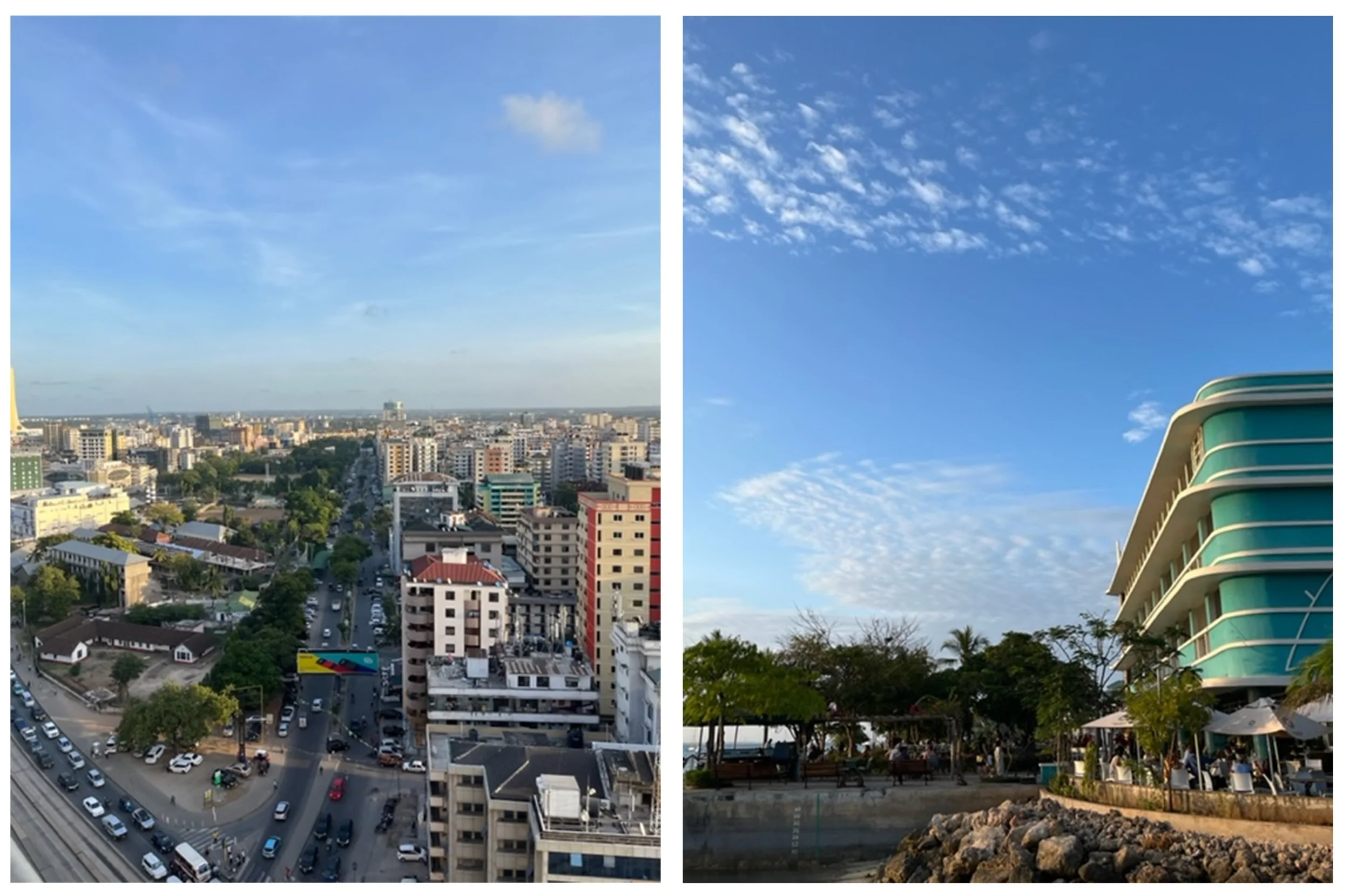DAR + DXB
By : Nazuk Beborta
Dar es salaam in Tanzania and Dubai in the United Arab Emirates- two cities I never imagined comparing but two cities I’m grateful to call home.
Like every city one visits or lives in, these are also built on the foundation of experiences and memories over the years that altered my (now biased) outtake on how I view them, this article is focusing mainly on the architecture and its static quality contributing to change.
Above : Dar Es Salaam (Photo by Nazuk Beborta)
Since my upbringing was fairly global, I vividly remember sitting in the backseat on our ride home from every airport, looking outside the window, and finding comfort in the familiarity of a place. I saw buildings as this sense of permanence and it is the stable nature of the built environment that inspired me to pursue architecture in the first place. Years have passed and I had the opportunity to go back to these places I call home just to realise how much “home” has really changed and now that ride home is starting to look very different. Funnily enough, this change is actually emphasized by new buildings highlighted in the cityscape by old ones.
Tanzania is a rapidly developing country- business is booming and it is the ideal slow life, however the urban fabric of the city has grown tremendously. It’s the classic archetype- dense in the city centre or like some people like to call it the heart of the city and gradually the height of buildings begin to drop as we near the ocean to allow for individual villas and private beaches and then the flats for the less financially fortunate with maybe some glimpses of the ocean. While the distribution of wealth is fairly polarized in Dar, it’s not very different to Dubai’s urban fabric. The difference is, in Dubai, you’d get only a flat with Tanzania’s villa prices. What stands out to me is how I would describe the 2 using adjectives- Dar being “rustic” where Dubai would be “futuristic” and I mean futuristic in the way that means stereotypically what one would expect future buildings to look like.
Above : Dubai (Photo by Nazuk Beborta)
The architecture in Dubai is indeed very fascinating mainly because to my understanding there is no real archetype in the city- every building is so unique it is indeed rare to find buildings that look like each other. From an architectural point of view, Dubai does get a lot of criticism and for the most part I can understand where that stems from, but I think Dubai just deals with a very different clientele- one that enjoys theatrics in the built environment and where the sky is the limit. (quite literally)
Above: Dubai (left) and Dar es salaam (right) - ( Photo by Nazuk Beborta)
That being said, both cities in all its glory, represent a very diverse demographic which ultimately is the commonality that brings them together in my opinion. I can only describe being in these places as a “warm hug” and while that is true for the tropical and desert climates it also stands true just by its ambiance. Both these cities possess a hunger for change and development while being in very different financial and geographical backgrounds and has made me further realise how architecture is simply reflecting the potential of this growth if its multiple high rise residential developments or financial districts or more community centres or places of worship. If you’re looking for a holiday that take you from paradise and throws you into the lap of luxury




